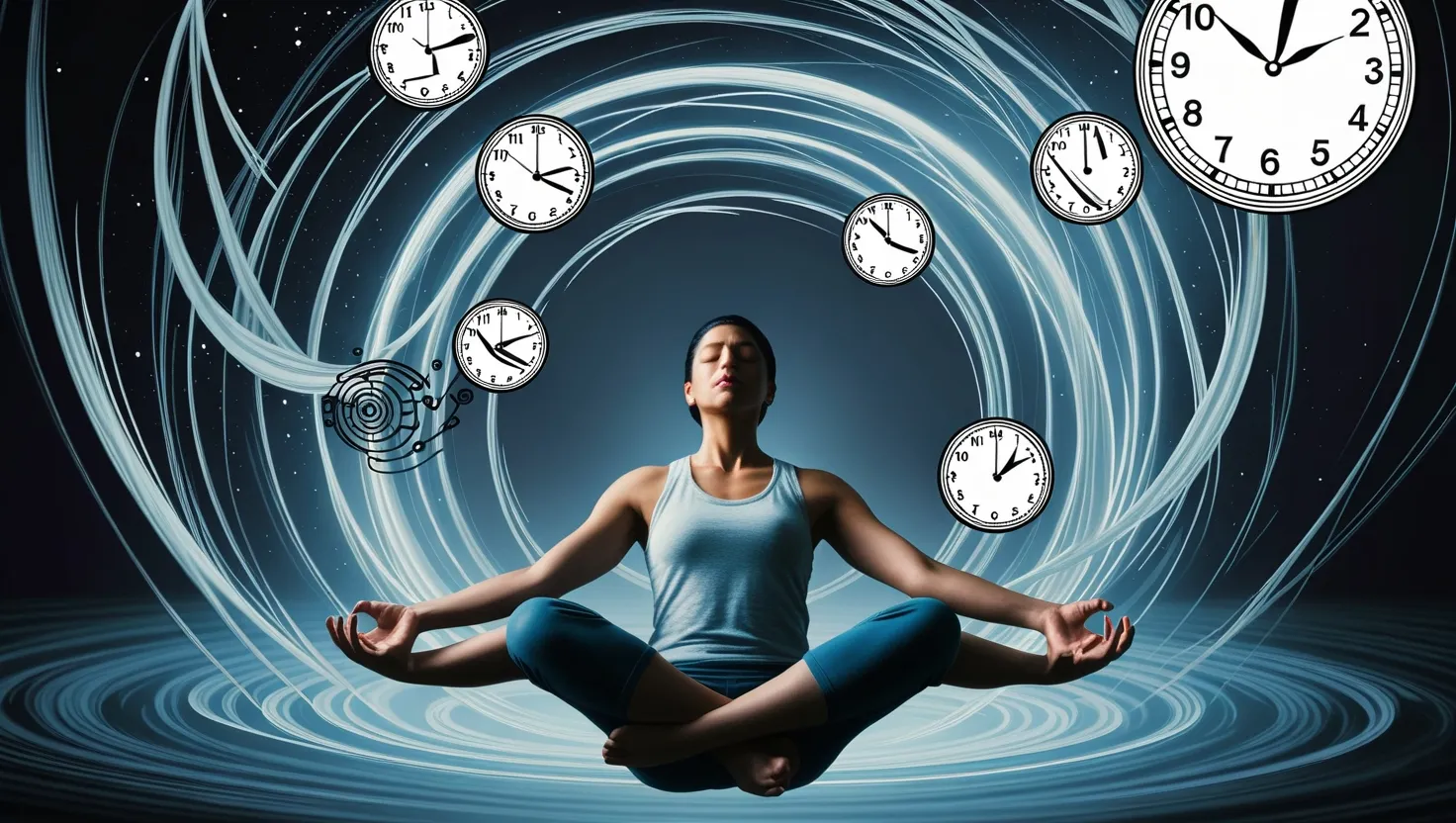Imagine a world where learning complex skills is not just about putting in the hours, but about manipulating your perception of time to make those hours feel like days. This concept, which we can call “chronokinetic learning,” taps into the brain’s remarkable ability to stretch or compress time, allowing for a deeper and more efficient absorption of information.
The Science of Time Perception
Time perception is not as fixed as we might think. Our brains process different types of sensory information at varying speeds, and this can lead to interesting phenomena. For instance, when you focus intensely on a task, time can seem to slow down. This is because your brain is processing information more quickly and efficiently, creating a subjective experience where time appears to stretch.
This effect is often described in the context of flow states, where you are fully immersed in what you are doing. Athletes, musicians, and even gamers often report this sensation, where hours feel like minutes because they are so engaged. By harnessing this ability, you can create an environment that accelerates your learning process.
Sensory Deprivation and Focus
One way to enter this state of heightened focus is through sensory deprivation techniques. Float tanks, for example, remove external distractions, allowing your brain to concentrate on the task at hand without any interruptions. In this environment, your brain can process information more intensely, making the learning process feel more efficient.
Another method involves using binaural beats, which are specific sound frequencies designed to alter brainwave activity. By listening to these beats, you can induce a state of deep relaxation and focus, similar to meditation. This state can enhance your ability to absorb and retain information, making learning feel almost effortless.
The Role of VR Simulations
Virtual Reality (VR) simulations offer another powerful tool for chronokinetic learning. By immersing yourself in a virtual environment, you can simulate real-world scenarios without the risks or distractions associated with actual practice. For example, if you’re learning to play a musical instrument, a VR simulation can provide an interactive and engaging way to practice, making the experience feel more immersive and time-efficient.
VR can also manipulate your perception of time by creating an environment where time seems to slow down or speed up. This can be particularly useful for skills that require precise timing, such as sports or dance. By practicing in a virtual environment where time is manipulated, you can improve your performance more quickly than you would in a traditional setting.
Flow States and Efficiency
Flow states are crucial to chronokinetic learning. When you’re in a flow state, you’re fully engaged in the task, and your brain is working at its optimal level. This state is characterized by heightened focus, reduced self-awareness, and a sense of control over the task.
To achieve flow states more easily, you need to create an environment that minimizes distractions and maximizes engagement. This could involve setting clear goals, providing immediate feedback, and ensuring that the task is challenging but not overwhelming.
Personal Experience and Application
I recall learning to play the guitar as a teenager. The initial stages were frustrating, with my fingers struggling to press down on the strings and my mind trying to coordinate the movements. However, as I practiced more, I began to notice that time seemed to fly by when I was fully engaged. Hours would pass without me realizing it, and I would feel a sense of accomplishment that was hard to match in other activities.
This experience taught me the value of focus and engagement in learning. By creating an environment that fosters these states, you can accelerate your learning process significantly. Whether it’s through sensory deprivation, binaural beats, or VR simulations, the key is to find what works best for you and use it to your advantage.
The Impact of Sleep and Time of Day
Research has also shown that the time of day and sleep can significantly impact skill acquisition and consolidation. For instance, studies have found that skills learned in the evening and followed by a night of sleep show better retention and improvement compared to skills learned in the morning or afternoon.
This suggests that timing your practice sessions strategically can enhance your learning. If you’re trying to master a new language or instrument, practicing in the evening and then sleeping on it can help your brain consolidate the information more effectively.
Practical Tips for Chronokinetic Learning
So, how can you apply these principles in your daily life? Here are a few practical tips:
- Create a Distraction-Free Environment: Whether you’re using a float tank, binaural beats, or VR simulations, ensure that your environment is free from distractions. This will help you focus more intensely and enter a flow state more easily.
- Set Clear Goals: Having clear goals helps you stay focused and motivated. Break down your learning into smaller, manageable tasks, and set specific goals for each session.
- Use Feedback: Immediate feedback is crucial for learning. Use tools or work with a coach who can provide you with feedback that helps you adjust and improve.
- Practice at the Right Time: Consider the time of day and your sleep schedule when planning your practice sessions. Evening practice followed by sleep can be particularly effective.
- Stay Engaged: Make the learning process engaging and interactive. Use VR simulations, interactive apps, or other tools that keep you engaged and motivated.
Conclusion
Chronokinetic learning is not just a concept; it’s a practical approach to accelerating your skill acquisition. By manipulating your perception of time through focus, sensory deprivation, and advanced technologies like VR, you can make learning feel more efficient and enjoyable.
This method is not about shortcuts or quick fixes; it’s about optimizing your brain’s natural abilities to learn and absorb information. Whether you’re learning a new language, mastering an instrument, or improving your athletic performance, chronokinetic learning can help you achieve your goals faster and with greater satisfaction.
In the end, it’s not just about the time you put in, but how you use that time. By entering a state where time seems to slow down or speed up, you can transform the learning process into a thrilling journey through the fabric of perceived time itself.






